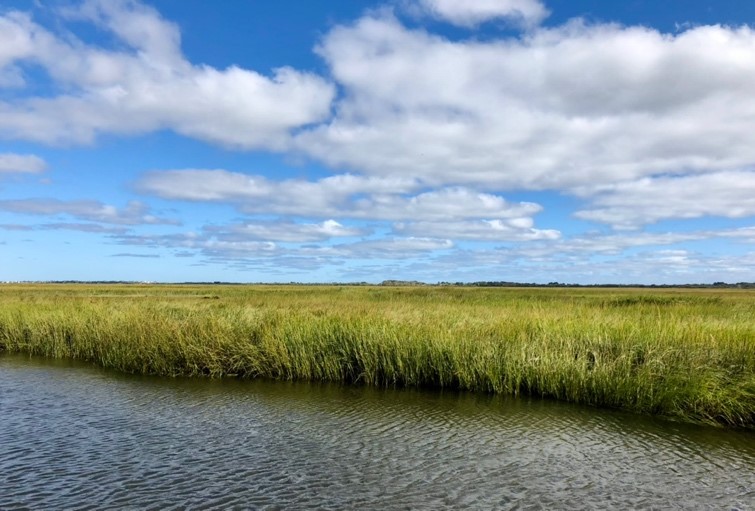We have much more to do and your continued support is needed now more than ever.
Putting Nature to Work for Coastal Communities

The National Oceanic and Atmospheric Administration (NOAA) estimates that coastal watersheds across the lower 48 states “lose 80,000 acres of coastal wetlands each year to development, drainage, erosion, subsidence and sea-level rise.” That’s approximately seven football fields every hour! The enormity of that loss is further amplified by the fact that coastal wetlands are some of the most productive ecosystems on Earth. They play an outsized role in ensuring the quantity and quality of commercial and recreational fisheries, supporting coastal tourism and recreation industries, filtering sediment and absorbing pollution from stormwater runoff, absorbing and storing floodwater, serving as storage sinks for greenhouse gases like carbon dioxide, and supporting the biodiversity that sustains these ecosystems.
At the same time, coastal states are the most densely populated, the most developed, the fastest growing, and currently home to more than 40% of the U.S. population. Like coastal wetlands, coastal communities are also vulnerable to the impacts of sea-level rise, coastal storms, and subsidence. Assessments suggest that more than $1 trillion in coastal property and structures are at risk from recurrent coastal flooding.
So, what is the relationship between the rapid loss of coastal wetlands and the vulnerability of coastal communities?

Coastal habitats, sometimes referred to as a form of natural infrastructure, can play a significant role in reducing impacts that communities face from flooding, erosion, and storm surge. NOAA estimates that wetlands alone provide $23 billion annually in coastal protection services by absorbing, storing, and filtering floodwater. An analysis conducted after Hurricane Sandy suggested that approximately $625 million in damages to coastal communities were averted because of the ecological services provided by coastal wetlands.
Protecting and restoring the ecological services that natural infrastructure can provide to vulnerable coastal communities is at the heart of the National Wildlife Federation’s (NWF) effort to increase the resilience of our nation’s shorelines. This means partnering with coastal communities, particularly frontline and under-resourced communities, to advance the use of natural and nature-based infrastructure approaches, like living shorelines and marsh restoration projects, that serve to both reduce coastal impacts, while increasing the resilience of the habitats that both wildlife and people depend upon.
These community partnerships are oriented towards NWF providing assistance and services based upon the priorities identified by the community itself. NWF’s contributions to advancing those priorities range from conducting outreach campaigns on how natural and nature-based infrastructure projects can benefit a community, to working with the community to identify funding for the siting, design and implementation of on-the-ground projects.
In New Bedford, MA, NWF collaborated with the State Coastal Zone Management Program to conduct a series of listening sessions with various community groups focused on understanding current priorities and future goals for shared coastal spaces. In Maryland, NWF is working with a coalition of community technical service providers to understand which entities are delivering assistance to frontline coastal communities, catalogue the types of services being delivered, and identify communities in need of assistance. In Smithtown, NY, NWF is working with the community to develop best management practices for private landowners on living with and mitigating the impacts of coastal bluff erosion. And, in Wolcott, NY, NWF is working with a Soil and Water Conservation District to develop a management plan focused on improving hydrologic connectivity. (See this issue’s contribution from our new Northeast Coastal Resilience Program Manager for more detail on this project!)
For the National Wildlife Federation, working in partnership with vulnerable coastal communities to advance the use of natural and nature-based infrastructure approaches is a core strategy to increasing the overall resilience of our nation’s coastlines.





















